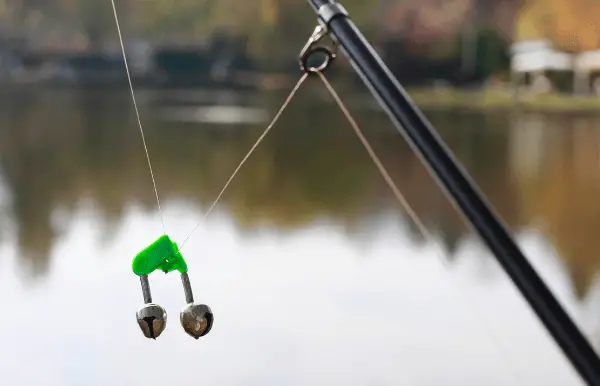
Fishing bells are important for anglers. They are small but powerful tools that warn when a fish has taken the bait. Fishing communities around the world value them for their cultural traditions. In traditional fishing, like fly fishing or ice fishing, anglers use bells to know when they might catch something. In modern fishing, bells help anglers watch many fishing lines at once. Fishing bells make fishing more exciting and build anticipation. The quiet sound of a bell means there might be a catch, bringing anglers closer to nature.
For many anglers, the sound of a fishing bell brings back memories of past fishing trips and time spent with other fishing fans. Whether on a fishing rod or directly on the line, these simple devices have interested anglers for a long time. These tools are still important to anglers and have a lasting appeal. This article will explore their cultural significance, their role in traditional and modern fishing, and why anglers find them fascinating.
A Historical Overview of Fishing Bells
Fishing bells have been important in fishing history worldwide. Early anglers used them to know when a fish had taken the bait. The first fishing bells were made of wood or metal and made a loud sound when the fishing line was pulled, helping anglers react fast.
In medieval Europe, fishing bells became more advanced with intricate designs and materials like bronze and brass. They were functional and considered art. Over time, different cultures made their fishing bells with unique features reflecting their traditions. Today, modern technology has electronic bite alarms, but traditional fishing bells are still important to many anglers as a symbol of heritage and connection to their craft’s roots.
These are important tools for anglers. They have evolved, showing improvements in technique and craftsmanship. This reminds us that innovation can work with tradition in fishing. Knowing this history helps us understand why these simple devices are still valuable to anglers around the world. They are practical tools and cultural artifacts that connect us to our ancestors’ fishing practices.
The Purpose of Fishing Bells
These small but powerful tools play a variety of roles in fishing. In addition to notifying anglers of fish bites, they also add to the enjoyment of the fishing experience. The soothing sound they produce can help create a peaceful atmosphere and build excitement, deepening the connection between anglers and the natural environment.
Fishing bells are often seen as a practical tool, but they carry deep meaning for numerous anglers. The soft sound they produce serves as a connection to the enduring heritage of fishing, uniting present-day anglers with those of the past. Additionally, in some societies, fishing bells are thought to bring luck and protect against negative forces, adding an intriguing dimension to their significance.
In addition to their practical function, fishing bells intertwine tradition, atmosphere, and superstition to enrich the art of angling. They go beyond mere bite signals, embodying centuries-old customs and adding to the spiritual allure that attracts countless enthusiasts to this cherished pursuit.

Different Types of Fishing Bells
Fishing bells serve the purpose of alerting anglers to fish activity. They are available in various forms, including clip-on bells and electronic bite alarms, each with its benefits. Clip-on bells, typically constructed from metal or plastic, are favoured for freshwater fishing and can be conveniently affixed to the rod tip or line. These classic bells emit a soft tinkling noise when there’s a nibble on the line, prompting anglers to respond.

On the other hand, electronic fishing bells have completely transformed the fishing experience with their modern capabilities, including customizable sensitivity settings and LED alerts. These advanced gadgets emit a clear and loud signal when a fish bites, enabling anglers to keep an eye on multiple rods at once without overlooking any potential catches.
In addition, some electronic fishing bells provide additional functions, such as vibrating alerts and customizable sound choices to enhance the fishing experience. Thanks to ongoing developments in fishing technology, anglers have a diverse range of options available when selecting the perfect fishing bell to meet their individual needs.

How to Use Fishing Bells Effectively
Enhance your fishing experience with these powerful tools that can detect bites and alert you. To make the most of them, it’s essential to grasp their function and when to employ them. Correct positioning is key – placing the bell close to your rod tip heightens sensitivity to bites and minimizes false alarms caused by water or wind. Additionally, adjusting your line tension ensures that any fish nibbling on the bait will create a distinct, gentle sound from the bell.
In addition, the timing of using fishing bells is crucial for their effectiveness. It’s best to use them during peak activity times like sunrise or sunset, as this helps you identify potential catches while allowing you to relax without constantly watching your fishing rod.
Furthermore, It’s also important to be attentive and recognize the distinct sound of each bell, which helps differentiate between natural noises and actual fish movement. By mastering these details, anglers can make the most of fishing bells and improve their overall success when fishing.

Pros and Cons
Pros:
1. Fishing bells improve the ability to detect bites, improving the likelihood of catching fish.
2. When positioned correctly near the end of the rod, they increase responsiveness and minimize false alerts caused by water or wind movements.
3. By adjusting the tension of the line, they produce subtle but clear sounds that signal when fish are nibbling on bait.
4. They are particularly useful for fishing in low light or at night.
5. Fishing bells enable anglers to multitask while keeping an ear out for potential bites.
Cons:
1. Relying too much on fishing bells might lead to less attention being paid to actively watching the fishing rod.
2. The cacophony of numerous bells in crowded fishing areas could cause a distracting atmosphere.
3. When it’s windy, telling the difference between natural movements and real bites could be difficult.
4. Certain types of fish might be put off by the sound of the bell, causing missed chances to catch them.
5. Improper positioning or tension settings could lead to missed opportunities or frequent false alerts due to fishing bells.
Conclusion
Across the ages, fishing bells have held significant value for anglers, fulfilling practical and cultural roles within the sport. Their primary purpose is to signal fish strikes, but they also contribute to heightening the sensory aspect of fishing, fostering a stronger bond with nature. Whether employed for leisure or sustenance, fishing bells bring an additional dimension of pleasure to the angling experience. Anglers are urged to adopt this enduring custom and discover the enriching impact of integrating fishing bells into their fishing endeavours.
FAQs
Q. What are fishing bells, and what do they do?
A. Fishing bells are small devices designed to alert anglers when a fish is nibbling on the bait by producing a ringing sound.
Q. When should I use fishing bells while fishing?
A. Fishing bells are most effective when you’re engaged in passive techniques, such as still fishing or bottom fishing, where it’s difficult to detect bites visually.
Q. How do I position the fishing bell for optimal effectiveness?
A. Place the bell close to your rod tip to maximize sensitivity in detecting bites and reduce false alarms caused by water movements or wind.
Q. How can I minimize false alarms from the fishing bells?
A. Adjust the tension of your line so that only fish nibbling on the bait will trigger a subtle yet distinct sound from the bell.
Q. Will using fishing bells scare away fish?
A. No, properly used fishing bells will not scare away fish; rather, they will help you respond more quickly to bites and improve your catch rate.


Good Job! Useful information